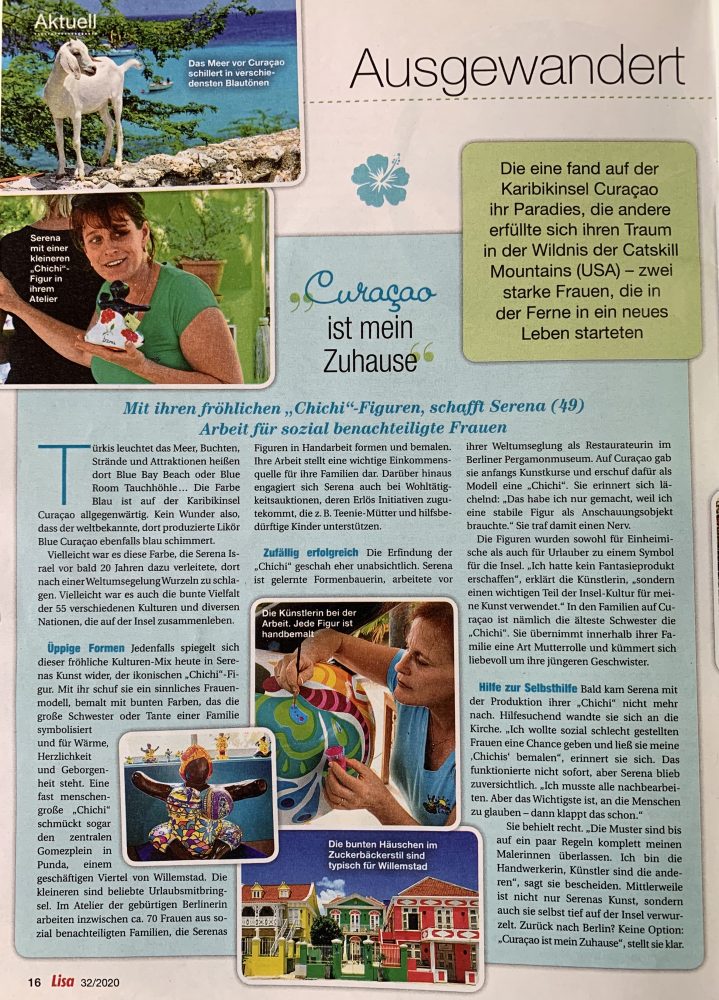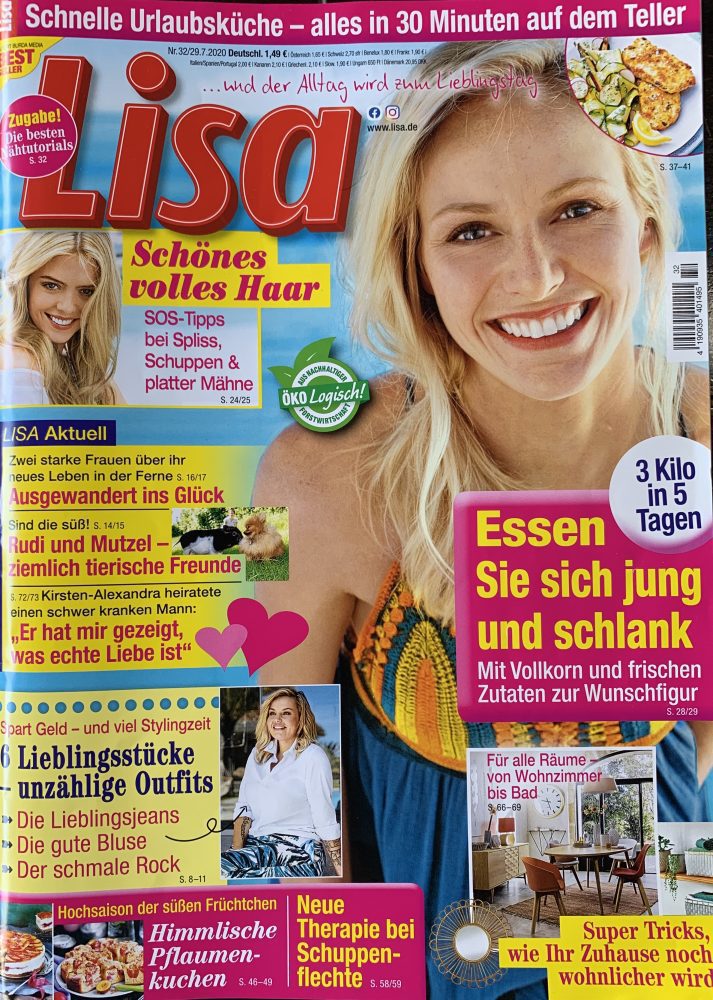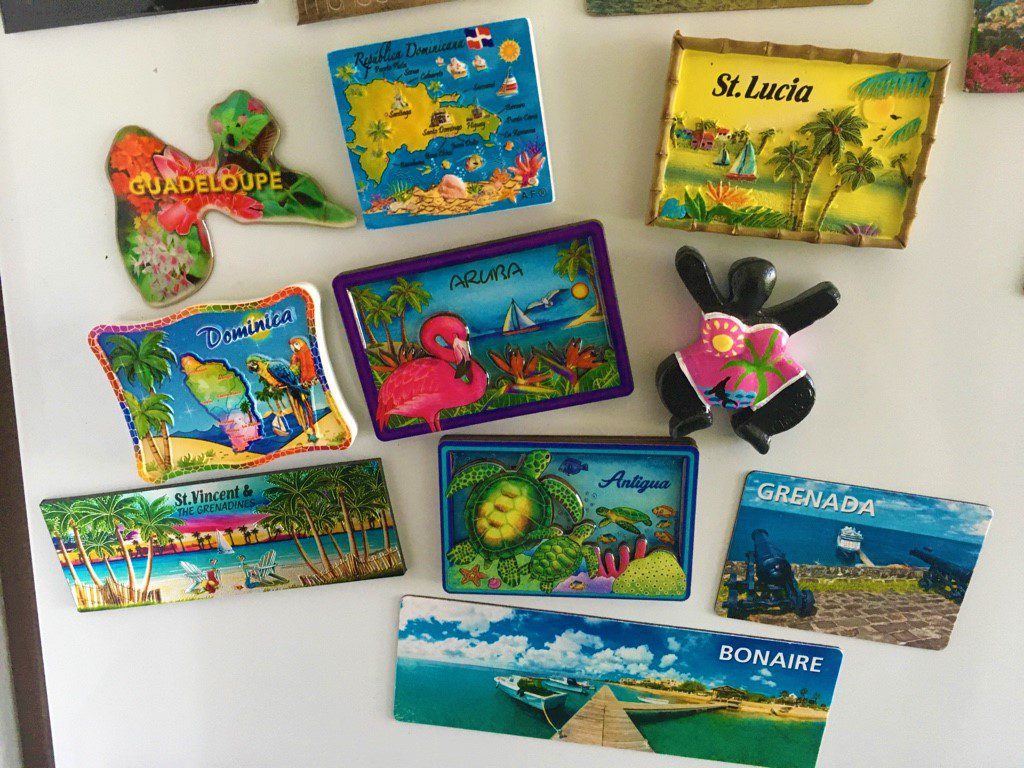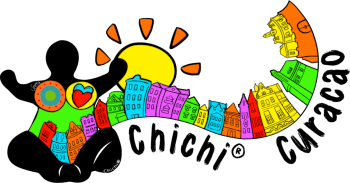Mentioned in LISA magazine
Original German Text: (Translation posted below)
Ausgewandert
Die eine fand auf der Karibikinsel Curaçao ihr Paradies, die andere erfüllte sich ihren Traum in der Wildnes der Catskill Mountains (USA) – zwei starke Frauen, die in der Ferne in ein neues Leben starteten.
„Curacao ist mein Zuhause“
Mit ihren fröhlichen „Chichi“-Figuren, schafft Serena (49) Arbeit für sozial benachteiligte Frauen
Türkis leuchtet das Meer, Buchten, Strände and Attraktionen heißen dort Blue Bay Beach oder Blue Room Tauchhöle… Die Farbe Blau ist auf der Karibikinsel Curaçao allgegenwärtig, dort produzierte Likör Blue Curaçao ebenfalls blau schimmert.
Vielleicht war es diese Farbe, die Serena Israel vor bald 20 Jahren dazu verleitete, dort nach einer Weltumsegelung Wurzeln zu schlagen. Vielleicht war es auch die bunte Vielfalt der 55 verschiedenen Kulturen und diversen Nationen, die auf der Insel zusammenleben.
Üppige Formen. Jedenfalls spiegelt sich dieser fröhliche Kulturen-Mix heute in Serenas Kunst wider, der ikonischen „Chichi“-Figur. Mit ihr schuf sie ein sinnliches Frauenmodell, bemalt mit bunten Farben, das die große Schwester oder Tante einer Familie symbolisiert und für Wärme, Herzlichkeit ung Geborgenheit steht. Eine fast menschen große „Chichi“ schmückt sogar den zentralen Gomezplein in Punda, einem geschäftigen Viertel von Willemstad. Die kleineren sind beliebt Urlaubsmitbringsel. Im Atelier der gebürtigen Berlinerin arbeiten inzwischen ca. 70 Frauen aus sozial benachteiligten Familien, die Serenas Figuren in Handarbeit formen und bemalen. Ihre Arbeit stellt eine wichtige Einkommensquelle für ihre Familien dar. Darüber hinaus angagiert sich Serena auch bei Wohltätigkeitauktionen, deren Erlös Initiativen zugutekommt, die z.B. Teenie-Mütter und hilfsbedürftige Kinder unterstützen.
Zufällig erfolgreich. Die Erfindung der „Chichi“ geschah eher unabsichtlich. Serena ist gelernte Formenbauerin, arbeitete vor ihrer Weltumseglung als Restaurateurin im Berliner Pergamonmuseum. Auf Curaçao gab sie anfangs Kunstkurse und erschuf dafür als Modell eine „Chichi“. Sie erinnert sich lächelnd: „Das habe ich nur gemacht, weil ich eine stabile Figur als Anschauungsobjekt brauchte.“ Sie traf damit einen Nerv.
Die Figuren wurden sowohl für Einheimische als auch für Urlauber zu einem Symbol für die Insel. „Ich hatte kein Fantasieprodukt erschaffen“, erklärt die Künstlerin, „sondern einen wichtigen Teil der Insel-Kultur für mei e Kunst verwendet.“ In den Familien auf Curaçao ist nämlich die älteste Schwester die „Chichi“. Sie übernimmt innerhalb ihrer Familie eine Art Mutterrolle und kümmert sich liebevoll um ihre jüngeren Geschwister.
Hilfe zure Selbsthilfe. Bald kam Serena mit der Produktion ihrer „Chichi“ nicht mehr nach. Hilfesuchend wandte sie sich an die Kirche. „Ich wollte sozial schlecht gestellten Frauen eine Chance geben und ließ sie meine ‚Chichis‘ bemalen“, erinnert sie sich. Das funktionierte nicht sofort, aber Serena blieb zuversichtlich. „Ich musste alle nachbearbeiten. Aber das Wichtigste ist, an die Menschen zu glauben – dann klappt das schon.“
Sie behielt recht. „Die Muster sind bis auf ein paar Regeln komplett meinen Malerinnen überlassen. Ich bin die Handwerkerin, Künstler sind die anderen“, sagt sie bescheiden. Mittlerweile ist nicht nur Serenas Kunst, sondern ach sie selbst tief auf der Insel verwurzelt. Zurüch nach Berlin? Kein Option: „Curaçao is mein Zuhause“, stellt sie klar.
English translation;
Emigrated
One found her paradise at Curaçao an Caribbean island, the other fulfilled her dream in the wilderness of the Catskill Mountains (USA) – two strong women who started a new life abroad.
“Curacao is my home”
With her happy “Chichi” figures, Serena (49) creates work for socially disadvantaged women
The sea shines turquoise, bays, beaches and attractions are called Blue Bay Beach or Blue Room diving caves … The color blue is all over on the Caribbean island of Curaçao, the liqueur Blue Curaçao produced there also shimmers blue.
Maybe it was this color that led Serena Israel to put down roots there after sailing around the world almost 20 years ago. Perhaps it was also the colorful diversity of the 55 different cultures and different nations that live together on the island.
Lush forms. In any case, this happy mix of cultures is reflected today in Serena’s art, the iconic “Chichi” figure. With that figure she created a sensual female model, painted with bright colors, which symbolizes the big sister or aunt of a family and stands for warmth, cordiality, and security. An almost human-sized “Chichi” even adorns the central Gomezplein in Punda, a busy district of Willemstad. The smaller ones are popular holiday souvenirs. In the meantime, around 70 women from socially disadvantaged families work in the studio of the native Berliner, who shape and paint Serena’s figures by hand. Their work is an important source of income for their families. In addition, Serena is also involved in charity auctions, the proceeds of which go to initiatives such as support teen mothers and children in need.
Successful by chance. The creation of the “Chichi” was rather unintentional. Serena is a trained mold maker, worked as a restaurateur in the Pergamon Museum in Berlin before her relocation. On Curaçao she initially gave art courses and created a “Chichi” as a model. She remembers with a smile: “I only did that because I needed a stable figure as an object to be seen.” It hit a nerve.
The figures became a symbol of the island for both locals and holidaymakers. “I didn’t create a fantasy product,” explains the artist, “but used an important part of island culture for my art.” In the families on Curaçao, the oldest sister is the “Chichi”. She takes on a kind of motherhood within her family and lovingly takes care of her younger siblings.
Help for self-help. Soon Serena couldn’t keep up with the production of her “Chichi”. She turned to the church for help. “I wanted to give socially disadvantaged women a chance and have them paint my ‘Chichi’s'”, she recalls. It didn’t work right away, but Serena remained confident. “I had to retouch all of them. But the most important thing is to believe in people – then it’ll work. “
She was right. “Except for a few rules, the patterns are completely left to my painters. I am the craftsman, the others are artists,” she says modestly. Meanwhile, not only Serena’s art, but also she herself is deeply rooted on the island. Back to Berlin? Not an option: “Curaçao is my home,” she clarifies.





